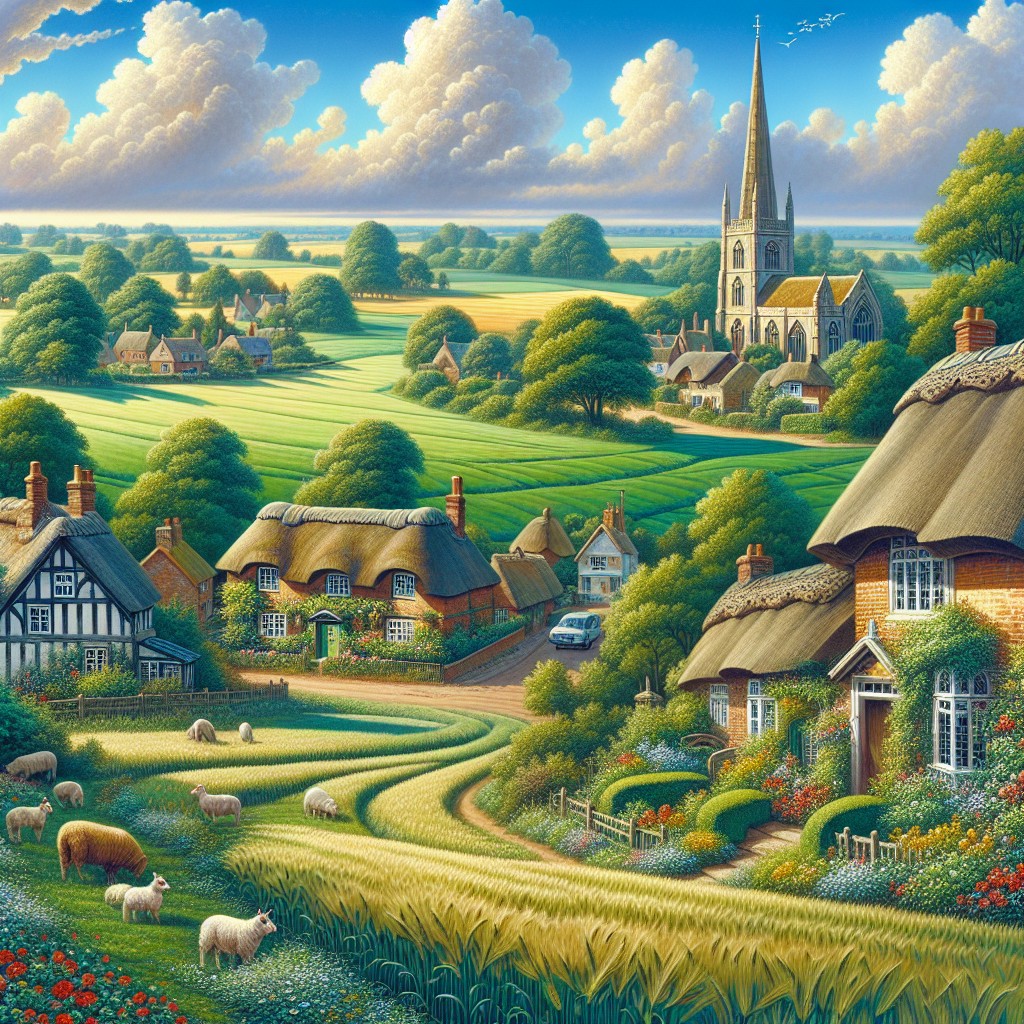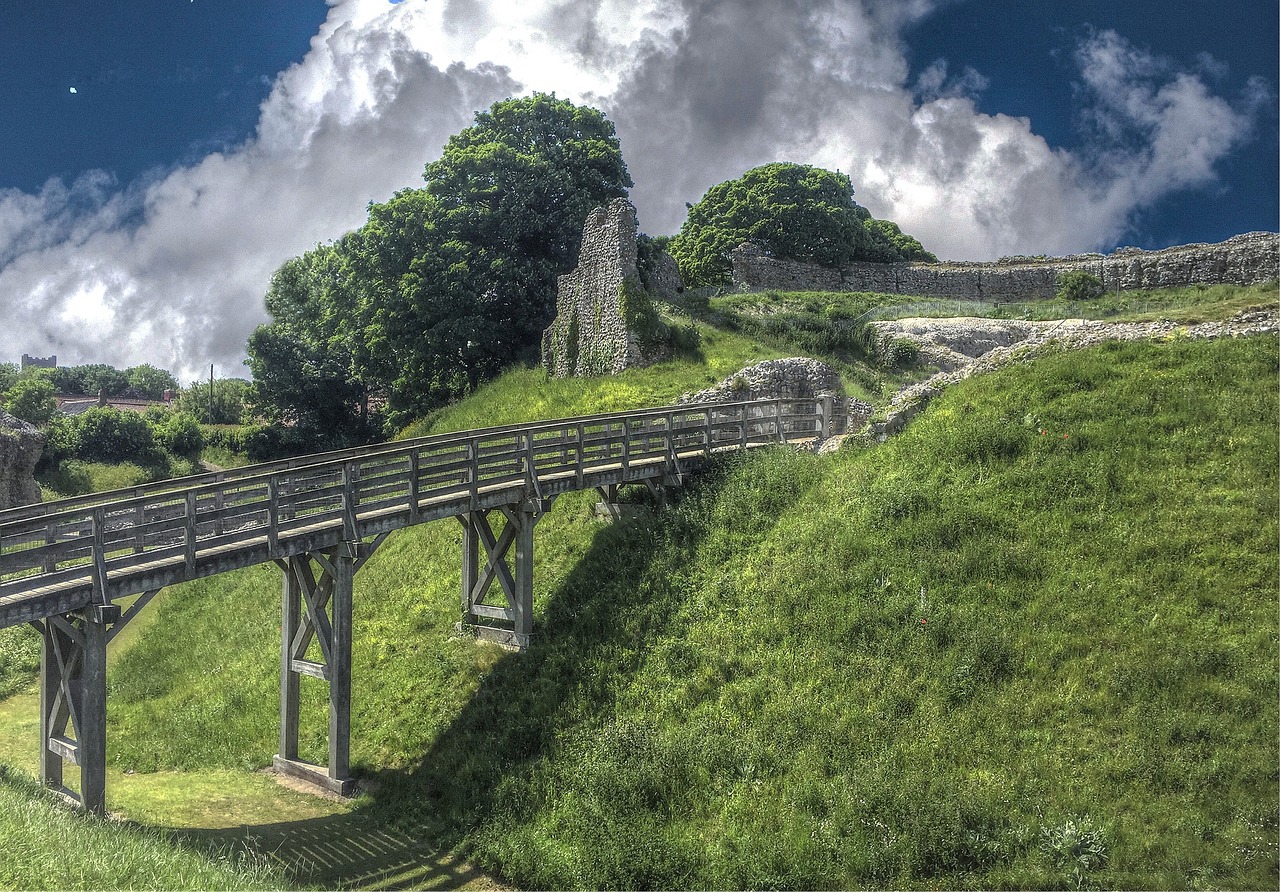
Norfolk is a county located in East Anglia, England. It is known for its rich history, natural beauty, and cultural highlights. With its stunning coastline, picturesque countryside, and charming towns and villages, Norfolk offers a diverse range of attractions for visitors to explore.
Summary
- Norfolk is a county in England with a rich history dating back to Roman times.
- Visitors can explore top attractions such as Norwich Cathedral and Sandringham Estate.
- Norfolk’s natural beauty includes stunning coastline and countryside perfect for outdoor activities.
- The county’s food and drink scene features local produce and fine dining options.
- Cultural highlights include museums, galleries, and theatres, while festivals and events celebrate Norfolk’s heritage.
History of Norfolk: From Roman Times to the Present Day
Norfolk has a fascinating history that dates back to Roman times. The county was once part of the Roman province of Britannia and was home to several important settlements, including the town of Venta Icenorum, which was the capital of the Iceni tribe.
During the Anglo-Saxon period, Norfolk became an important center of trade and commerce. The town of Norwich, which is now the county’s capital, was founded by the Anglo-Saxons in the 5th century and quickly grew into a thriving city.
In the Viking era, Norfolk was frequently raided by Viking invaders. The county’s strategic location on the east coast made it an attractive target for Viking ships. However, the Vikings were eventually defeated by the Anglo-Saxons and Norfolk remained under English control.
Norfolk played a significant role in the Industrial Revolution, with many towns and villages becoming centers of industry and manufacturing. The county’s ports and waterways were vital for transporting goods and materials, and Norfolk became known for its textiles, engineering, and brewing industries.
During World War II, Norfolk was heavily involved in the war effort. The county’s airfields were used by the Royal Air Force for training and as bases for bomber squadrons. The city of Norwich was also targeted by German bombers during the Blitz, resulting in significant damage to the city’s historic buildings.
Today, Norfolk has a thriving economy that is based on a diverse range of industries including agriculture, tourism, manufacturing, and services. The county is home to several major companies and has a strong entrepreneurial spirit.
Top Attractions in Norfolk: Discovering the Best of the County
Norfolk is home to a wide range of attractions that cater to all interests and ages. One of the top attractions in the county is Norwich Cathedral, a magnificent medieval cathedral that dates back to the 11th century. The cathedral is known for its stunning architecture and beautiful stained glass windows.
Another must-visit attraction in Norfolk is Holkham Hall, a grand country house that is surrounded by a vast estate. The hall is open to the public and offers guided tours of its opulent interiors and extensive art collection. The estate also includes a deer park, a lake, and beautiful gardens.
For nature lovers, the Norfolk Broads is a must-visit destination. This unique wetland area is made up of rivers, lakes, and marshes, and is home to a diverse range of wildlife. Visitors can explore the Broads by boat, kayak, or on foot, and can enjoy activities such as birdwatching, fishing, and cycling.
Families visiting Norfolk will find plenty of attractions to keep children entertained. Banham Zoo is a popular choice, with its wide range of animals and interactive exhibits. BeWILDerwood is another family-friendly attraction, offering a unique outdoor adventure park with treehouses, zip wires, and storytelling.
For those looking to discover lesser-known attractions in Norfolk, the Thursford Collection is worth a visit. This museum houses an impressive collection of steam engines, fairground rides, and mechanical organs. The Blickling Estate is another hidden gem, with its stunning Jacobean mansion and beautiful gardens.
Norfolk’s Natural Beauty: Exploring the Coastline and Countryside
Norfolk’s coastline is renowned for its natural beauty and picturesque beaches. Cromer Beach is a popular choice for families, with its sandy shores and traditional seaside attractions. Wells-next-the-Sea is another stunning beach, with its colorful beach huts and beautiful sand dunes.
The Norfolk Broads is a unique and beautiful area of wetland that is perfect for exploring by boat or on foot. The Broads is home to a wide range of wildlife, including rare birds, otters, and water voles. Visitors can hire a boat and navigate the waterways, or take a guided tour to learn more about the area’s history and ecology.
Inland, Norfolk’s countryside is dotted with charming villages, rolling hills, and nature reserves. The Norfolk Coast Path offers stunning views of the coastline and is a popular choice for walkers and hikers. The county is also home to several nature reserves, such as Titchwell Marsh and Hickling Broad, which are havens for birdwatchers.
Norfolk’s Food and Drink Scene: From Local Produce to Fine Dining
Norfolk is known for its delicious food and drink, with a focus on local produce and fresh seafood. The county’s coastline provides an abundance of seafood, including Cromer crab, samphire, and mussels. Visitors can enjoy freshly caught seafood at one of the many seafood shacks or restaurants along the coast.
Norfolk is also home to several fine dining restaurants that showcase the best of local produce. Morston Hall, located on the north Norfolk coast, has been awarded a Michelin star for its exceptional cuisine. The Neptune in Old Hunstanton is another renowned restaurant that offers a menu inspired by the county’s coastal location.
Traditional Norfolk dishes are also worth trying during a visit to the county. Cromer crab is a local delicacy that is often served with freshly baked bread and butter. Norfolk dumplings are another traditional dish, made from suet pastry and often served with stew or gravy.
Cultural Highlights of Norfolk: Museums, Galleries and Theatres
Norfolk has a rich cultural heritage and is home to several museums, galleries, and theatres. The Norwich Castle Museum and Art Gallery is a must-visit attraction, with its impressive collection of art, archaeology, and natural history. The museum is housed in a historic castle and offers a fascinating insight into the county’s past.
The county is also home to several theatres that offer a diverse range of performances. The Theatre Royal in Norwich is one of the oldest theatres in the country and hosts a wide range of productions, including plays, musicals, and ballet. The Pavilion Theatre in Cromer is another popular choice, offering a variety of shows and performances throughout the year.
Smaller galleries and museums are also worth exploring during a visit to Norfolk. The Sainsbury Centre for Visual Arts, located on the campus of the University of East Anglia, houses an impressive collection of modern and contemporary art. The Museum of Norwich at the Bridewell offers a fascinating insight into the city’s history and heritage.
Festivals and Events in Norfolk: Celebrating the County’s Heritage
Norfolk hosts a wide range of festivals and events throughout the year that celebrate the county’s heritage and culture. The Norfolk and Norwich Festival is one of the largest arts festivals in the UK and showcases a diverse range of performances, exhibitions, and events.
The Cromer Carnival is another popular event that takes place every summer. The carnival features a variety of activities and attractions, including parades, live music, and fireworks. It is a highlight of the summer calendar for both locals and visitors.
Smaller events also take place throughout the year, such as the Wymondham Music Festival, which celebrates classical music with a series of concerts and performances. The Holt Festival is another popular event that showcases a wide range of arts and culture.
Events celebrating Norfolk’s heritage are also worth attending. The King’s Lynn Festival celebrates the town’s rich history with a program of music, dance, and drama. The Great Yarmouth Maritime Festival is another popular event that celebrates the town’s maritime heritage with boat displays, live music, and family-friendly activities.
Outdoor Activities in Norfolk: Walking, Cycling and Water Sports
Norfolk offers a wide range of outdoor activities for visitors to enjoy. The county is home to a network of walking and cycling routes that allow visitors to explore the countryside and coastline. The Norfolk Coast Path is a popular choice for walkers, offering stunning views of the coast and access to beautiful beaches.
Water sports are also popular in Norfolk, thanks to its extensive coastline and the Norfolk Broads. Sailing, kayaking, and paddleboarding are all available on the Broads, with equipment available to hire. The county’s beaches also offer opportunities for swimming, surfing, and kiteboarding.
Other outdoor activities in Norfolk include birdwatching, with several nature reserves offering excellent opportunities to spot rare and migratory birds. Horse riding is also popular, with many stables offering guided rides through the countryside and along the coast.
Accommodation in Norfolk: From Cosy B&Bs to Luxury Hotels
Norfolk offers a wide range of accommodation options to suit all budgets and preferences. For those looking for a cosy and welcoming place to stay, there are plenty of bed and breakfasts available throughout the county. These offer comfortable rooms and a delicious breakfast to start the day.
Luxury hotels are also available for those looking for a more indulgent stay. Many of these hotels are located in historic buildings or country estates and offer luxurious rooms, fine dining restaurants, and spa facilities.
For those looking for a unique experience, glamping is a popular choice in Norfolk. There are several glamping sites that offer luxury tents or cabins with all the comforts of home. Holiday cottages are also available for those looking for a self-catering option.
Families visiting Norfolk will find plenty of family-friendly accommodation options, including holiday parks and campsites. These often offer a range of facilities and activities for children, such as swimming pools, playgrounds, and entertainment.
Getting Around Norfolk: Transport Options for Visitors
Getting around Norfolk is relatively easy, thanks to its well-connected transport network. The county is served by several major roads, including the A11 and A47, which provide easy access to other parts of the country.
Public transport options in Norfolk include buses and trains. There are regular bus services that connect towns and villages throughout the county, making it easy to explore the area without a car. The Bittern Line railway runs from Norwich to Sheringham and offers stunning views of the Norfolk countryside.
Cycling is also a popular way to get around Norfolk, thanks to its flat terrain and network of cycle routes. The county is home to several long-distance cycling routes, such as the Marriott’s Way and the Peddars Way.
Norfolk is a county that offers something for everyone. With its rich history, natural beauty, and cultural highlights, it is a destination that should not be missed. Whether you are interested in exploring historic sites, enjoying outdoor activities, or indulging in delicious food and drink, Norfolk has it all. So why not plan a visit to this beautiful county and discover all that it has to offer?
FAQs
What is Norfolk, England?
Norfolk is a county located in the East of England, bordered by Lincolnshire to the west, Cambridgeshire to the southwest, and Suffolk to the south.
What is the population of Norfolk?
As of 2021, the estimated population of Norfolk is around 903,000 people.
What is the capital of Norfolk?
Norwich is the county town and the capital of Norfolk.
What is the geography of Norfolk?
Norfolk has a diverse landscape, including the Norfolk Broads, a network of rivers and lakes, and the North Norfolk Coast, which is an Area of Outstanding Natural Beauty. The county is also known for its flat, fertile farmland.
What is the economy of Norfolk?
Norfolk’s economy is diverse, with industries such as agriculture, tourism, and manufacturing playing a significant role. The county is also home to several major ports, including Great Yarmouth and King’s Lynn.
What are some popular tourist attractions in Norfolk?
Norfolk has many popular tourist attractions, including the Norfolk Broads, Norwich Cathedral, Sandringham House, and the seaside towns of Cromer and Hunstanton. The county is also known for its many nature reserves and wildlife parks.




